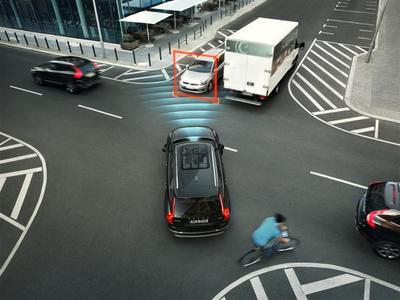CAR MBS Conference: Automated Vehicles – Training the Rest of Us +VIDEO
By Martha Hindes
Senior Editor
Michigan Bureau
The Auto Channel
 |
Traverse City MI August 3, 2017; Who hasn’t heard at least something about automated vehicles coming down the pike. For anyone involved in the auto industry, it’s becoming standard buzz.
But what about the multi-tasking mom in Dubuque, Iowa, or the dentist in Brooklyn, New York, or the salesman in Miami? Maybe they have enough introduction to be aware that something is happening that eventually might affect them. Maybe they’ve shared that instant angst that becomes: ”I’ll never drive one of those!” “I don’t want anything to do with that!” “Are they crazy?”
We mention Brooklyn because stats coming out of the CAR MBS conference in Traverse City, Michigan show that folks living there are among the least likely to own smart phones. And such an aversion to a ubiquitously used technical gadget could mean it will take longer to lose their mental training wheels when learning to live with autonomous vehicles.
During the first three days of this year’s annual session, attendees have gotten a broad stroke view of the efforts to take distrust and anxiety out of the prospect that within about five years it could be normal to have a so-called “driverless car,” AKA autonomous vehicle, cruising in the next lane while the person in the traditional “driver’s seat” instead has eyes glued to a hand held mobile device with only an occasional glance at the road ahead. As development continues on technology, it will bring “more changes (to the auto industry) in the next five years than in the last 50 years,” according to Steve Kiefer, Senior Vice President of Global Purchasing at General Motors Company.
Those who potentially will be guiding or riding in a vehicle without a human in control will get plenty of advance notice and hand-holding to become accustomed to the idea of transversing from the age of Fred Flintstone to the Jetsons in the proverbial blink of an eye.
But one component has received far less emphasis. That’s the “you” and “me” who have never been inside a self-driving vehicle and won’t likely be doing so for a while.
According to Dr. Melissa Cefkin, Principal Researcher of Human Centered Systems at Nissan’s Silicon Valley Research Center, a major unknown is how long and what it will take to get the human who isn’t in a self-driving car to know what to expect, whether standing on a street corner, or making a U turn while behind the wheel of today’s vehicle. Research has shown that pedestrians and other drivers are well conditioned as to what they expect in or near traffic. Much of that comes from body language either while at a vehicle’s controls or if waiting at a crosswalk for traffic signals to change. There’s a distinct body language that shows how we anticipate what is coming next. We see a car ready to accelerate from a stop and we show by our hesitant reactions that we are prepared to stay put and wait for the next green. The same is true for the driver who might lift his or her foot off the brake pedal slightly that allows a slight forward motion signaling they are ready to go.
As technology learns more to incorporate artificial intelligence which is a main component for autonomous driving, there will be a distinct change in the flow of movement coming up to or going around an impediment in the road.
Dr. Cefkin showed a video of the way an autonomous vehicle, once AI trained, will react to the flow. Instead of coming to a stop as a driver would when a pedestrian starts to cross a street against a light, the AV slows and skirts around the object. That’s rather the way a fish would dodge something under water and just flow around it. Instead of abrupt movements there’s almost a ballet-like feeling as the synchronous movement flows around successive objects that are moving or static.
As a contrast, the video displayed old film from 1904 when horseless carriages were beginning to compete for roadway with horse drawn carriages and no one knew what to expect. In the film, the early auto drivers were learning how to interact with constant movements from all directions at a time there were no traffic lanes or other guidance systems. And people at that time learned to deal with it.
A major difference now as AI learns to guide a vehicle and people understand how to react is no fallout from horse drawn carriages. Presumably AI would know how to negotiate around that as well if there were.
Copyright 2017, Martha Hindes, Automotive Bureau. All rights reserved.



